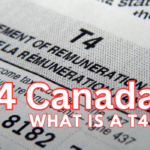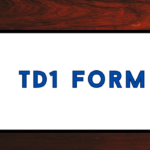Here are some of the latest updates on the EI Max Contribution 2024: How Much is Maximum Employer Contribution? All We Know. Are you aware of the latest changes to the Employment Insurance rates for 2024? This post will cover everything you need to know regarding EI Max Contribution 2024, including enhancement in CPP and much more.
EI Max Contribution 2024
The Employment Insurance program offers temporary income support to unemployed workers seeking new job opportunities or enhancing their skills. It is a mandatory scheme managed by the Federal Government. In addition, the program provides special benefits for workers who need to take leave from work due to significant life events such as pregnancy or illness.
In the latest update, the Canada Employment Insurance Company announced the escalation in Employment Insurance premium rates last year. Starting in 2024, employees will see their premium rates rise from $1.63 to $1.66 per $100 of stable income. As the CPP rates have been inflated in the country, the EI rates sticking upwards, and as a result, the contribution rates are constantly rising every year.
|
Important Links |
What Is Employment Insurance?
The EI Program is a Federal policy that provides a non-permanent source of income support to the unemployed. Apart from financial aid, the program helps the unemployed looking for jobs.

To determine whether you are eligible for the payment, government agents look at the total number of hours you worked during the qualifying period, which is typically the previous 52 weeks before you make your claim. The EI premium rates for Quebec have been increased to $1.85 for the employers and $1.32 for the workers.
How Much is Maximum Employer Contribution?
The employment insurance contributions are calculated based on your annual earnings up to the government’s Maximum Insurable Income. As of 2024, the MIE is set at $63200. Once the annual income hits the threshold, you have reached the EI Max. Kindly note that any earnings beyond this limit will not incur additional EI deductions.
Reaching the EI max will not impact your eligibility for EI benefits if you face unemployment later. However, the amount of EI you may receive is influenced by your contribution history over the past 52 weeks. Therefore, maximizing the contributions ensures you qualify for the highest possible benefits.
Are Self-Employed Eligible for EI?
If you are self-employed, we would like to inform you that you can participate in the EI program by your choice, but it is not mandatory. If the self-employed opt for the EI, they do not have to make contributions for the employer’s side. Therefore, the maximum contribution for self-employed claimants is set to $1,002.
You can receive three types of EI benefits depending on your personal circumstances.
- People who cannot work because they have given birth to a newborn or have adopted a child are eligible for Maternity and parental benefits.
- If someone is unable to work due to severe illness or can opt for Sickness benefits by submitting valid evidence to support the reason.
- If you are caring for an injured or ill person, whether a child or an elder, you are eligible for Family caregiver benefits.
EI offers benefits to eligible individuals who have unfortunately lost their jobs through no fault of their own and are actively seeking work.
|
Important Links |
All We Know
The maximum insurable income will jump from $61,500 to $63,200. This adjustment translates to an annual inflation in the maximum EI contribution, amounting to $46.67 more for workers and $65.34 more for employers. Are you wondering about the EI contribution for a worker with a gross income of $42,000 and the tax credit for employment insurance? Kindly refer to the table we have shared to know the EI tax credit rates and the contribution rate with an income of $42,000.
| Program | Contribution Amount | Tax Credit |
| Employment Insurance | $42,000 x 1.63% = $684 | $684 x 15% = $103 |
Participating in the EI is compulsory for all employees in most situations. If we consider the previous year’s data round, 1.63 per cent of an employee’s gross income is within EI, with the maximum insurable earnings capped at $61,500, resulting in a maximum contribution of $1002 by the employee. Employers must contribute 1.4 times the employee’s EI contribution.





